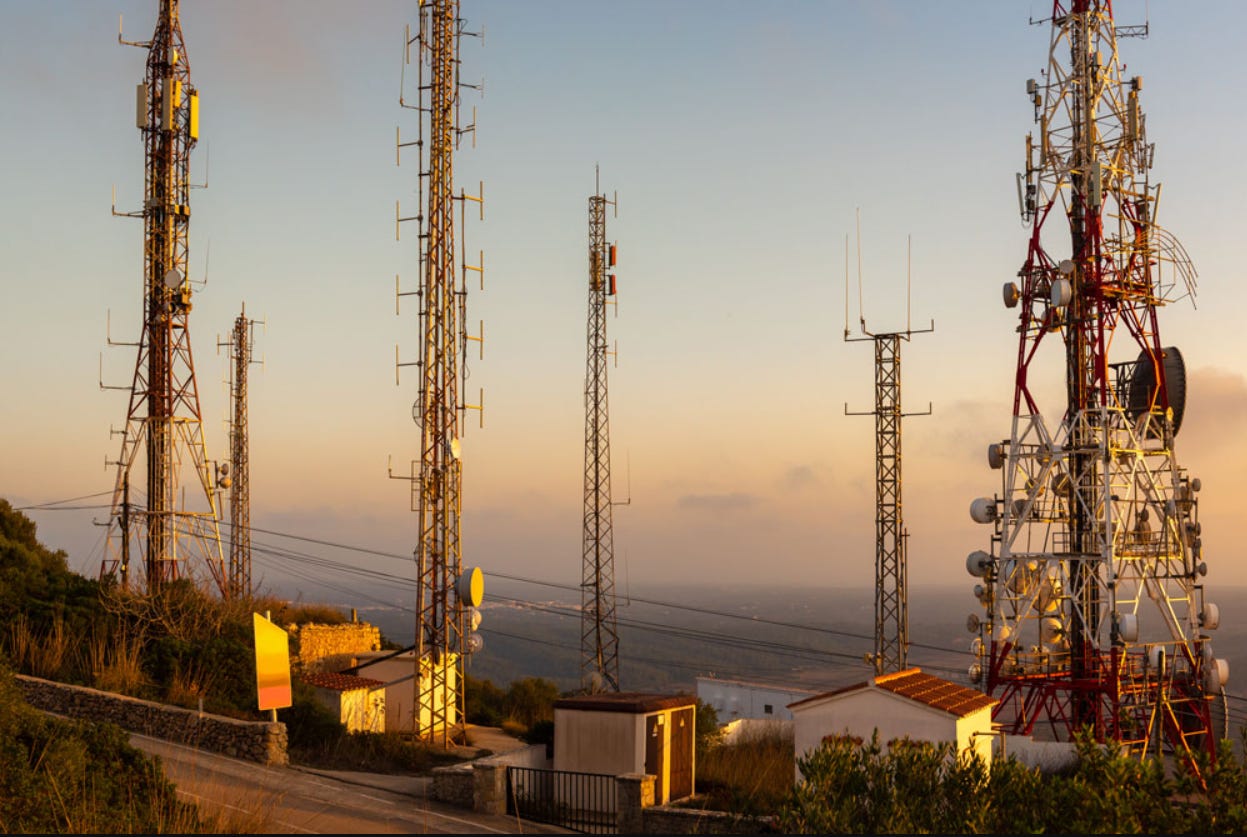HR 3557: The Big Telecom Takeover Continues
BY NICK ROGERS
CHARDON - HR 3557 – aka the American Broadband Deployment Act of 2023 – is the most prominent of dozens of pending congressional bills aimed at fast-tracking wireless electromagnetic frequency (EMF) telecommunications infrastructure nationwide while, at the same time, preempting what little local zoning board control remains.

Traditionally, municipalities have had a great deal of power over what is and isn’t allowed to be erected in a local area but, when it comes to wireless “small cell” antennas and “macro cell” 4G/5G towers popping up in and around residences, schools, hospitals, and places of work, HR 3557 and its related bills aim to strip municipalities’ remaining say.
HR 3557 comes on the heels of HB 331 and HB 478, both of which passed and could be viewed as two more nails in the collective coffin of local wireless infrastructure jurisdiction. HB 331 – whimsically known as the “Petland Bill” because of amendments having to do with such things as cockfighting regulation and animal shelters – was met with 80 separate lawsuits, including one from then-Mayor Frank G. Jackson of Cleveland in 2017. To the best of this author’s knowledge, none of the suits managed to overturn the law; rather, it was slightly amended and morphed into HB 478 instead.
Local wireless ordinances, like Chardon's, tout the importance of protecting the “..health, safety, and general welfare of the citizens of the City,” and yet many of them do not contain a minimum wireless fixture setback requirement for residences, schools, or hospitals. Chardon’s ordinance, for example, only requires that a residential small cell installation be located on the shared property line of two homes. This means – in the case of this author’s property – that a small cell affixed to the light pole located at the boarder of the two properties would be less than 50 feet from the nearest window.
Luckily, Ohio Citizens have not remained silent. Mariemont resident Jennifer Manzler fought, successfully, for her Village to adopt a wireless ordinance (they previously did not have one) after she became diagnosed with Electromagnetic Sensitivity in 2018. A cavalcade of ailments began shortly after the installation of a smart meter on the outside of her bedroom wall.
“Suddenly I experienced all kinds of strange and scary symptoms like tinnitus, heart palpitations, insomnia, brain fog, overwhelming anxiety, pain and burning in my hands and fingers when holding my cell phone or touching my laptop,” Manzler said. “I didn't figure out what was wrong with me until I stumbled upon Jeromy Johnson's TEDxtalk ‘Wireless Wakeup Call’ where he described the same thing happening to him.”
Electromagnetic Sensitivity (EMS), also known as Electromagnetic Hypersensitivity (EHS) – a condition legitimized by the Americans with Disabilities Act but still considered a psychological disorder by much of the mainstream media and regularly debated in court – has become a ubiquitous ailment of our modern age; something more and more Citizens struggle with; a struggle that often includes putting up with constant skepticism from friends and family.
Manzler said, “When Verizon approached the village with a plan to install 5G small cells, I sent a doctor's statement to Verizon, effectively putting them ‘on notice’ for the physical and mental harm that would result from a cell tower being placed so close to my house.” Unfortunately, a large 4G/5G tower currently sits only .3 miles from her home, the pulsating radiation from which makes living there an ongoing challenge.
A Rocky River resident who wishes to remain anonymous is also a sufferer of EMS. Her symptoms became so severe that she was forced to relocate to a rural location.
“I can tell you that I hate it, that I've been forced to be out of my home,” she said. “I miss sharing meals with my family, lively conversations around the table, celebrations... miss being able to go places I used to before the sudden onset of symptoms that have increased in severity – no concerts, cultural events, sporting events, limited shopping, and more – anyplace with high RFR [radio frequency radiation]/electromagnetic fields presents a challenge.”
Beyond her own personal struggle with EMS, she has become an advocate for education and informed consent regarding public EMF exposure. “I have since bought an RF [radio frequency] meter and have documented readings,” she said. “It's helpful for my family and friends to see the measurements; in essence, it makes RF and microwave frequency visible. People suffering from EMS, however, can feel it. A meter is not needed for that.”
Manzler and the Rocky River resident, thankfully, are not lone wolf activists/advocates. Groups such as SW Ohio for Responsible Technology (SWORT), Children’s Health Defense (CHD) Ohio Chapter, and Citizens for 5G Awareness: NEOhio are all working tirelessly to raise public awareness of the health and privacy concerns of this omnipresent technology.
Monique Maisenhalter, SWORT Board Member, firmly believes that only with enough Ohioans contacting local, state, and federal lawmakers to voice their concerns will there be any chance of gaining the requisite political momentum to stop the Federal bills in their tracks.
Maisenhalter said, “We don't know how many Ohio municipal governments are currently pushing back on these federal bills that would eliminate municipal control over wireless and 5G deployment. Many still may not know that these federal bills exist. We do know that a growing number of Ohio Citizens are pushing back. We also know that if these federal telecom bills are passed, it's likely that protective ordinances passed by Ohio municipalities won't matter."
In addition to getting involved with Ohio activist groups, she advises Ohioans to subscribe to the National Call for Safe Technology (NCST) newsletter, attend their conference calls, and contact NCST (hello@TheNationalCall.org) to ask them to lead conference calls with their federal lawmakers. NCST representatives have already led conference calls with staff members from the offices of Warren Davidson, Max Miller, and JD Vance. They have offered to lead more for Ohioans willing to request them.
Mainstream media and industry funded scientists tell us there is little evidence of danger regarding the exponentially growing pileup of EMF frequencies and that concerned Citizens are making much ado about nothing.
Scientists like Ronald N. Kostoff, Ph.D., on the other hand, calls the unfettered rollout of EMF telecommunications The Largest Unethical Medical Experiment In Human History. He is far from alone in his sentiment. In fact, warnings of the ongoing harm from this ever-expanding infrastructure are coming from all around the globe. Despite the World Health Organization (WHO) classifying EMFs as “possibly carcinogenic,” the biological harm of these man-made frequencies is widely described in the scientific literature ***hyperlink to subsequent TOR piece*** and expertly summarized by groups such as Baubiologie.
For those of us who don’t view EMFs as biologically dangerous, here are some things to consider: the pending bills would eliminate aesthetic restrictions imposed by the National Historic Preservation Act (NHPA), pave the way for rapid deployment of wireless facilities in national parks, allocate previously military-only frequency bands to the public sector, and allow the Federal Communications Commission (FCC) to ignore input from other government agencies such as the Department of Defense (among many other provisions).
The industry funded wireless full-court press is on, and only vehement Citizen dissent can possibly turn the tide. Whether it’s health, privacy, national security (wireless communications are easily hackable), or simply the principle of federal overreach that resonates, it’s up to Ohioans to make their voices heard before small cells on every street becomes “the new normal.”




